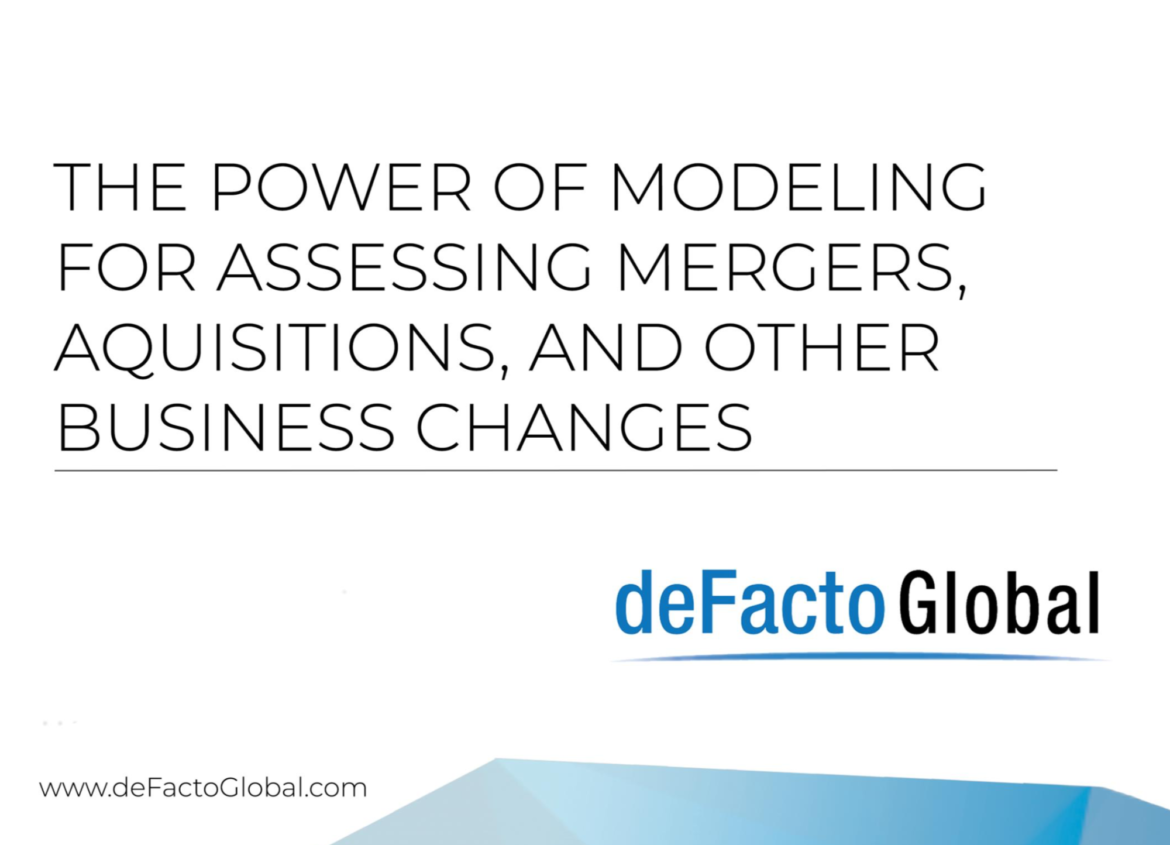
The Power of Modeling
THE POWER OF MODELING FOR ASSESSING MERGERS, ACQUISITIONS, AND OTHER BUSINESS CHANGES
By Anthony D’Anna
Creating a digital model of a business has been a long sought-after goal of financial planners. Why? A digital model of your business enables you to envision what different business outcomes would be when you try different scenarios. A good example of the power of business modeling is the ability to assess a potential merger or acquisition.
In deciding whether to acquire another company, you typically assess a number of key factors:
• The impact on your business
• Redundancies
• Synergies
• The price you might be willing to pay for company
If you have a model of your company in your deFacto business planning solution, your actuals that reside in your ERP will already be in the model. To analyze the impact of the acquisition, all you need to do is create a new alternate hierarchy and add a new member to represent the target acquisition (let’s call it Company B).
You can simply obtain an Excel file from Company B with its actuals and easily load that into your business planning solution directly from Excel using the deFacto Data Manager, without having to employ any extract, translate, and load (ETL) application or any other middleware.
Once you have the data loaded for Company B, you can run reports in deFacto looking at both hierarchies, side by side to see where the overlap might be. You can do the analyses by location, product, and business line to see where any synergies and overlap might be.
Your analyses are not limited to financial data. Any operational data can be reported on also, such as sales units, customers, patients, new equipment, employees, etc. You can look at what-if scenarios for revenue, income, balance sheet, and even cash flow.
Let’s assume that, based on the assessment of acquiring Company B, you make your bid. Company B accepts your offer and it’s time to merge. You can report on the consolidated company almost immediately in deFacto using the Data Manager to load Company B’s data. You can continue to do this or decide to integrate with Company B’s ERP system or have Company B migrate to your ERP. The choice is yours.
ESCAPING EXCEL HELL
Without a modeling tool, companies typically assess mergers and acquisitions using Excel spreadsheet models. This is extremely cumbersome and is one reason why there are so many articles about “escaping Excel hell.”
Excel-only models are limited in the amount of detail they can analyze, and they have no ability to easily look at data in various dimensions. Excel also involves manual links and formulas that can create difficulties that cause analysts to get an estimate completely wrong.
Even more difficulties arise if you attempt to perform what-if scenarios in Excel based on different criteria such as market growth, cash flow, etc., where things like keeping track of versions can undermine your effort.
MAKING MODELING POSSIBLE
Until recently, the architecture and computing power of business planning tools were not up to the task of creating models. Impediments to creating business models also included the vast amount of information that had to be aggregated and operated on, which tended to bog down the older generation of tools.
A number of technology advances—such as in-memory computing, increased computing power, and unified and intelligent architectures—have enabled the new generation of business planning platforms like deFacto to create digital models that were not possible with the previous generation of corporate planning tools.
BOUNTY OF MODELING BENEFITS
Assessing and facilitating an acquisition is just one example of the power of business modeling. Once you have merged your two companies you can continue to model what-if scenarios to optimize the combined business going forward.
Having a centralized model will enable managers across all areas of your business (HR, sales, manufacturing, etc.) to tap into the model to perform what-if analyses and make decisions relating to their business units. With a platform like deFacto’s, managers can perform analyses based on past present and future views, including real-time analyses to capitalize on business moments.
You also can enhance your decision-making capabilities by easily adding complementary tools and services like popular business intelligence (BI) apps and Azure Machine Learning for predictive forecasting. The power that a modeling solution brings to your business will pay dividends in the form of better decision-making and maximized revenue growth.
To download the PDF Version – Click HERE
